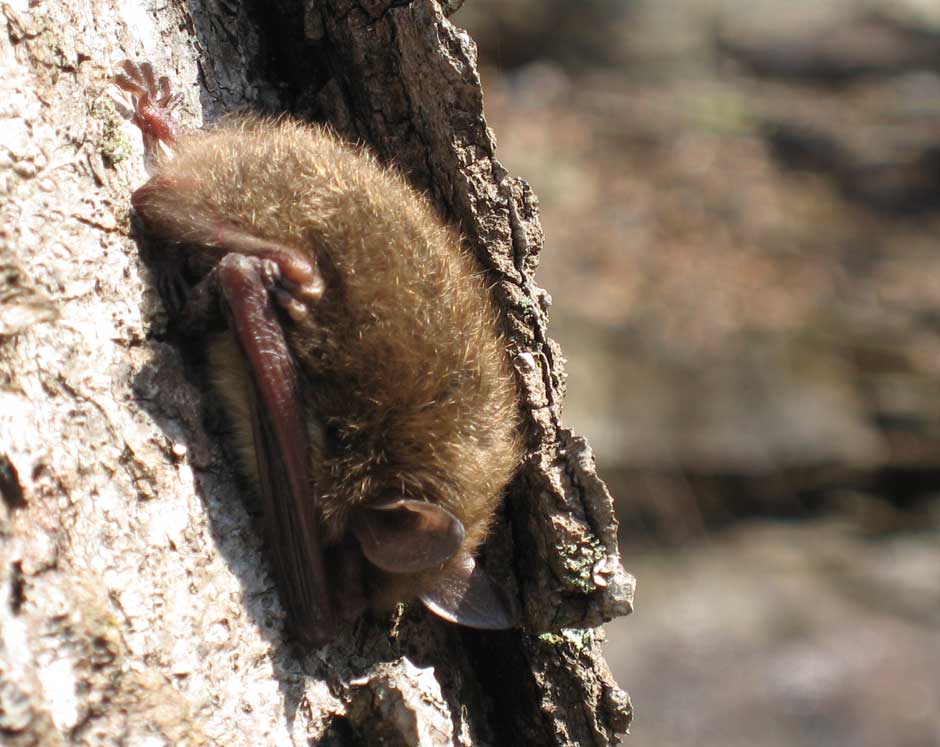|
You are viewing ARCHIVED content published online before January 20, 2025.
Please note that this content is NOT UPDATED, and links may not work. For current information,
visit https://www.nps.gov/aboutus/news/index.htm.

NPS photo by Mark Graham.
Contact: Contacts: Scott Stonum, Chief Resource Management , (304) 465-6531 Contact: Ann Froschauer, National White-Nose Syndrome, (413) 253-8536
New River Gorge National River Release date: April 18, 2011 New River Gorge National River has detected the presence of white-nose syndrome (WNS) in central Fayette County, West Virginia. This winter National Park Service wildlife biologist Mark Graham observed bats flying out of several of the park's abandoned mine portals in the middle of the day. "It was the wrong time of year and definitely the wrong time of day for healthy bats to be coming out of the mines rather than hibernating," said Graham. Suspect little brown bats were submitted to the Southeast Cooperative Wildlife Disease Study (SCWDS), where lab results confirmed the disease. The West Virginia Department of Natural Resources had discovered WNS in bats last winter in the counties just east of the park and elsewhere in the state. White-nose syndrome is a disease caused by the fungus Geomyces destructans and is responsible thus far for the deaths of over a million bats in eastern North America. First discovered in a New York cave in February 2006, the fungus has spread rapidly - having been detected west into Oklahoma, north into Canada, and south to North Carolina. The fungus thrives in cold and humid conditions typical of those found in caves and mines in which many bat species hibernate. The disease got its name from the white fungal growth which can be seen around the muzzles, ears, and wing membranes of affected bats, typically during their hibernation. Of the ten species of bats occurring in the park, seven are considered "cave hibernating" bat species and three are tree bat species. Six of the park's cave species have proven to be susceptible to WNS elsewhere in the nation, including the federally endangered Indiana bat. Bats with WNS appear to use up their precious fat reserves too quickly to stay in hibernation through the winter. The fungus is transmitted from bat to bat, but long distance, sudden leaps of the fungus are believed to have been facilitated by human activities. Thus far there are no cures for the disease which does not seem to affect humans or other animals. Scientists are cautious about applying any fungicide treatments in caves or mines which could risk disrupting delicate subterranean ecosystems. Before WNS, bats have been long-lived small mammals with average life spans of about 20 years; some little brown bats have been documented to live over 40 years! Though long-lived, bats reproduce slowly with each mother having only one pup per year. If bat populations ever recover to pre-WNS levels, it will take a long time. Bats are a vital part of our ecosystem and their rapid decline could be noticed directly by humans. Bats can consume up to half their body weight in insects in just one night; one little brown bat may catch 600 mosquitoes per hour! To do your part to help, always adhere to local, state, and federal cave advisories and closures to help prevent the movement of WNS by humans. For your own safety (and the bats') never enter abandoned mines. If you see what look to be dead or sick bats within the park, do not pick them up - instead report them to park headquarters at 304-465-0508. Suggested websites to learn more about bats and WNS are: US Fish and Wildlife Service - www.fws.gov/WhiteNoseSyndrome/
|
Last updated: February 26, 2015
